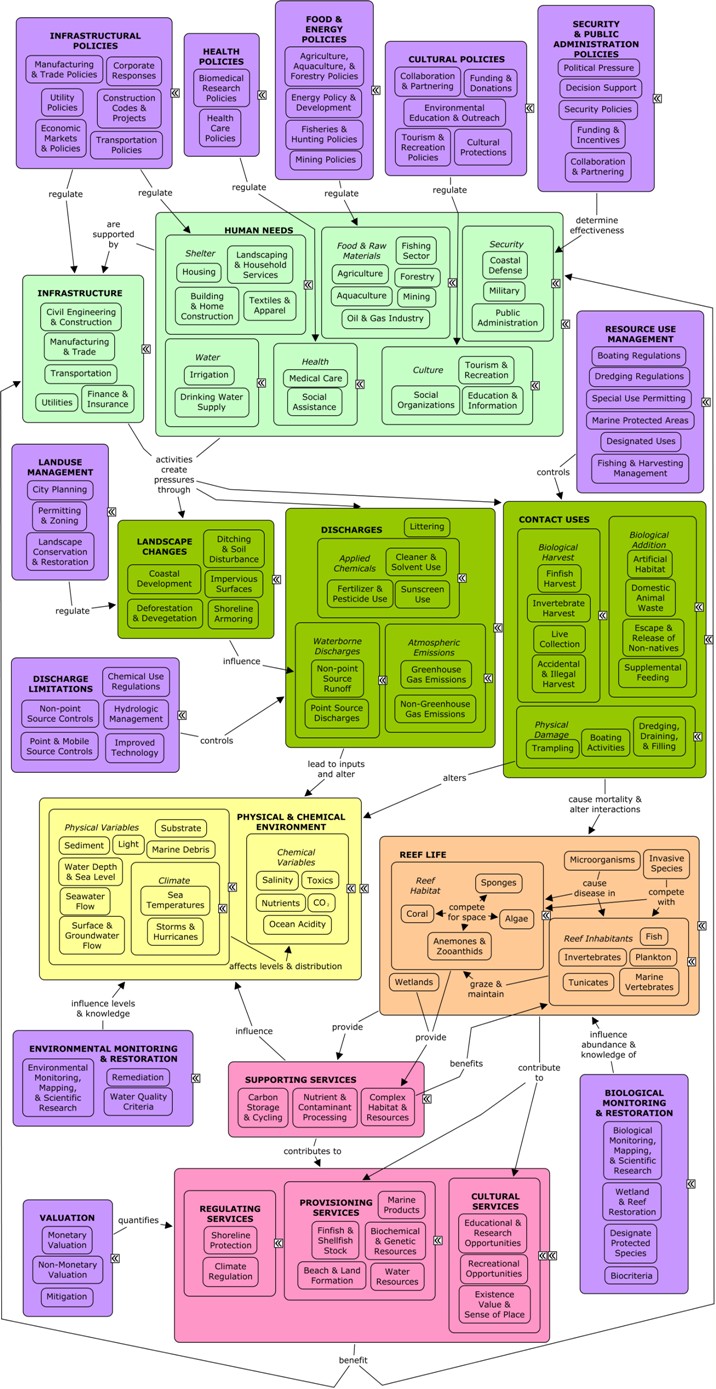ReefLink Database
Whole Systems Model
The Whole Systems Conceptual Model provides an overview of all the topic areas, and connections between them, within a single overarching framework. The model illustrates the links between socio-economic sectors (light green) and the pressures (dark green) they create on the reef ecosystem (yellow or orange) and consequently, the availability of reef goods and services (pink). Decision-makers may enact responses (purple) to reduce impacts on environmental resources through regulations, policies, and other decisions. Connections are not intended to be all-inclusive (every possible connection between pairs of words), but are instead intended to represent general patterns, stimulate ideas, and provide examples.
In addition to illustrating connections among topics, the Whole Systems Model provides a visual Table of Contents to topics in the database. Select any category to navigate to see examples, more conceptual models, or database information on scientific literature citations, legislation, or management options.

